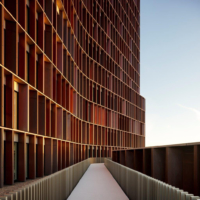Esitteet ja raportit
No. Copper is not susceptible to precipitation hardening.
- Class 1 is a forging whose failure would lead to uncontrollable flooding, the total immobilisation of the vessel or serious harm to personnel.(e.g. First Level systems in submarines).
- Class 2 is a forging whose failure would lead to severe but controllable flooding, the serious disruption of weapon systems, main propulsion machinery, or its attendant auxillaries, including generators
- Class 3 is a forging whose failure does not constitute an immediate, significant hazard.
- Class 4 is a forging which is used for forging stock only.
On average, copper alloy cages must be cleaned approximately once or twice a year, which is significantly fewer than traditional cages, over a service life.
No. The system energy efficiency can also be achieved with conventional tubes (such as 3/8 inch diameter tubes) simply by using more tubes and thereby increasing the surface area available for heat transfer. Nevertheless, a penalty is paid in terms of the increased weight of tube material and fin material as well as increased refrigerant volume. In general, if larger diameter tubes are used then a larger coil size is necessary to achieve the same performance and energy efficiency that could be achieved in a more compact system with smaller diameter tubes.
No, they are made from steel coated with a thin layer of copper.
The rectification of defects by welding is not permitted on Class 1 and Class 2 forgings.
Yes, with care and the correct procedure.
Yes, brass and bronze alloys are available.
No.
Applying a lacquer is not recommended, particularly when large areas are considered. Lacquers will require regular maintenance over the life of the roof.
Copper will not harden during storage; it does not have a shelf life.
Yes. Copper surfaces have been proven to have over 90% less contamination than conventional touch surfaces in hospital trials around the world. Trials have taken place, or are under way, in China, France, Germany, Greece, Japan, Spain, South Africa, Chile and the US.
Furthermore, in a multi-centre US trial, funded by the Department of Defense, copper surfaces were shown to reduce a patient’s risk of acquiring a healthcare-associated infection by 58%.
